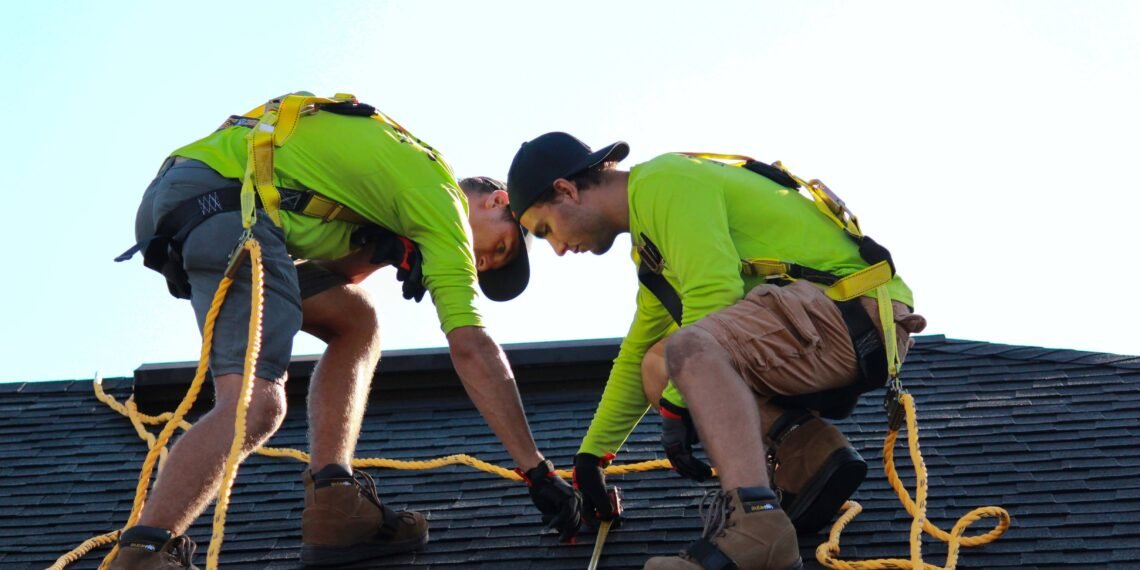Roofs are an integral part of any building. It’s the first line of defense against harsh weather and other natural elements. While it is natural for roofing to degrade over time, it’s essential to understand the different factors that affect the lifespan of your roof. Here are seven factors to consider.
Roofing Material
The lifespan of a roof depends heavily on the roofing material. While most American houses use asphalt shingles for roofing that have a 20-25 year lifespan, they need routine checks and maintenance to stay in tip-top condition.
Other materials like metal, slate, tile and concrete arguably have longer lifespans, but they can be more costly than asphalt shingles. Every homeowner should understand the kind of material they’re planning to use so they can better estimate their roof’s lifespan.
Roof Installation
New homeowners may get so excited about the prospect of owning their own house that they forget to look at their contractors’ job quality. The lifespan of a roof significantly depends on the quality of installation.
Some roofing materials, like shingles, are water-shedding. They function differently than waterproof materials like metal. Improper roof installation can lead to leaks and structural damage to a house if left unchecked.
That’s why it’s recommended to veteran and first-time homeowners to be more discerning about their contractors and inspect their work. A roof can only do its job if it’s properly installed by professionals who know what they’re doing.
Roof Maintenance
The lifespan of a roof can also depend on the maintenance or upkeep it receives. Unchecked and unmaintained roofs will exhibit more wear and tear than well-kept and regularly checked roofs.
Homeowners should consider adding safety installations around their homes to make maintenance easier. Secured ladders will give roofing professionals quicker access to elevated and high-risk areas around the house to do their jobs safely and efficiently.
Asphalt shingles are more cost-effective than other roofing materials but also need regular maintenance to maximize their lifespan on any roof. They can warp and become brittle with constant exposure to the sun and other elements, so it’s best to treat them with solutions that bring back their pliability and water-shedding properties.
Weather Conditions
Veteran homeowners know the value of quality roofs. Aside from protecting the household from the elements, it also protects investments like vehicles inside garages, valuable items inside the house and the house itself.
Weather conditions can easily threaten all of these due to a roof’s poor condition. Harsh weather conditions also degrade roofs much quicker, effectively shortening their lifespan. Homeowners in storm-prone areas should consider this factor more than in locations with fairer weather.
Thermal Cycles
Thermal cycles refer to the changing reaction of roofing materials based on various climates. Roofing can contract and expand due to cold and heat, significantly impacting a roof’s lifespan.
Greater temperature differences between day and night will render roofing materials more vulnerable to the effects of thermal cycles. Homeowners should be wary of these changes when choosing roofing materials and estimating their lifespans.
Ventilation
While it may seem unrelated to a roof’s lifespan, ventilation is a considerable factor when it comes to maximizing the longevity of roofs. Roofs absorb a lot of heat during the day, and residual heat can contribute to premature wear and tear.
Attic ventilation can help ease the heat stress on roofing materials and prolong its lifespan. This is why roofing professionals recommend proper attic ventilation and insulation to protect homeowners from costly repairs and increased electricity costs due to constant indoor climate control.
Roof Age
When a roof’s got to go, it has to go. Roofing can only last a specific amount of time, depending on the material, maintenance and exposure to the elements. A roof can protect a household for as long as it is appropriately cared for.
Much like other building materials, roofs will age and become less effective as the years go by. Homeowners must prepare for eventual repairs and replacement of weathered sections if they wish to protect their homes and loved ones adequately from the elements.
Improve the Lifespan of your Roof
Homeowners should understand the importance of high-quality workmanship and roofing materials to build a home that will last a lifetime. These are areas where they should forego skimping on costs. A quality roof built by skilled professionals is a sound investment for any discerning homeowner.









